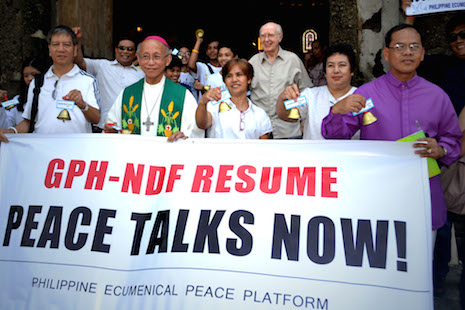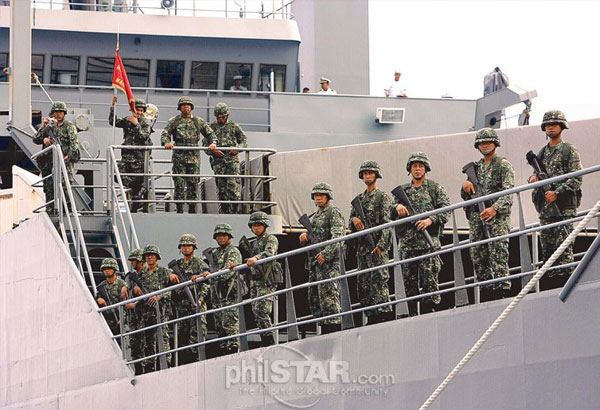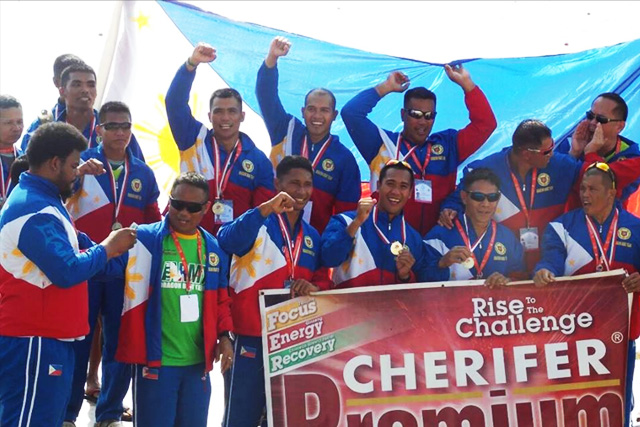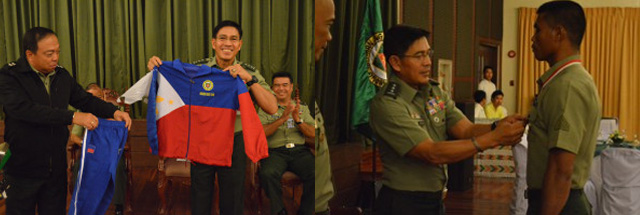Opinion piece from the
SKETCHES column by Ana Marie Pamintuan in Philippine Star (Sep 22):
Disposition of firearms
There was no mention of
“decommissioning” or “normalization” in the 1996 peace treaty with the Moro
National Liberation Front (MNLF).
But two administrative orders implementing the agreement
provided for the “disposition of firearms,” covering MNLF members who wanted to
be integrated into the Armed Forces of the Philippines and Philippine National
Police. Those with no firearms to surrender were disqualified from integration
into the AFP or PNP.
The camp of former President Fidel Ramos sent me documents
to show that the peace treaty, which his administration signed with the MNLF,
did involve turning over weapons to the state, even if there was no mention of
disarmament, decommissioning or normalization. What’s important in a peace
process, FVR wrote, is implementation, not semantics.
MNLF rebels were required to turn in their weapons upon
reporting to the AFP training center where they would undergo a six-month
course.
The government compensated the MNLF member for every weapon
turned over, with the amount set under the AFP “Balik-Baril Project.” But the
government could “re-issue” the guns to the rebel returnees during their
training or upon deployment.
That looks like the MNLF fighters were made to present their
guns, they got paid for doing so, and then they got their weapons back. Not
exactly laying down their arms, but at least the government was able to account
for thousands of weapons.
“All firearms still in the possession of MNLF members not
integrated into the military or police service shall be subject to existing
firearms laws, rules and regulations,” according to Section 7 (b) of
Administrative Order No. 295, dated Oct. 7, 1996, which covered integration
into the AFP.
Similar provisions are found in AO No. 297 dated Oct. 15,
1996, on the integration of MNLF members into the PNP.
I read that to mean registering all loose firearms, either
for possession at home or for a permit to carry the weapon outside the home.
Among those who didn’t want to be part of the AFP or PNP,
how many actually turned in or registered all their weapons? We may never know.
The picture becomes murkier if we try to make an accounting of all the firearms
amassed by MNLF founding chairman Nur Misuari when he was governor of the
Autonomous Region in Muslim Mindanao (ARMM). But Misuari was not the only local
politician who built up an arsenal for use by his virtual private army.
FVR, who thinks we’re finding fault in his peace treaty with
the MNLF “to play up and heap praises” on President Aquino’s administration and
his peace negotiators, points out that from 1996 to 2000, 5,750 MNLF
mujahedeen’s were integrated into the AFP and 1,750 into the PNP.
None of the MNLF returnees, once re-armed, ever turned
against their fellow soldiers or policemen, FVR wrote. Among the most
outstanding, he pointed out, was Yusoph Jikiri, who reached star rank and
became deputy commander of the AFP Southern Command in charge of the MNLF
integration program. Jikiri later became Sulu governor. Another standout was
MNLF chief of staff Muslimin Sema, who won three consecutive terms as mayor of Cotabato City.
Those are impressive stories indeed. I also know other MNLF
members who have embraced the ways of peace.
So if the peace process achieved a sufficient measure of
success, why do we need another peace agreement? And how many more peace pacts
lie ahead with other groups before peace actually comes to the conflict areas
of Mindanao?
*
* *
Jikiri’s province remains one of the most unsafe and least
developed places in this country. It is seen as the base of Abu Sayyaf bandits
and MNLF militants loyal to Misuari. Sulu is the subject of several travel
advisories warning foreigners against visiting Mindanao.
Some quarters in P-Noy’s government believe the peace
process with the MNLF had fallen into the quicksand of Misuari’s ego from which
it was no longer possible to get out. That ego is beyond the control of FVR,
and no one is blaming him for what happened many years after the peace treaty
was signed.
Aquino critics, echoing Misuari’s argument, believe the
original peace treaty has not been fully implemented and P-Noy just wants to
tout a peace pact under his watch.
From the peanut gallery, a common question is whether peace
can be possible in a region bristling with guns.
We have tough gun laws, but the laxity of enforcement – in
fact the overall weakness of law enforcement – makes the reluctance of a rebel
group to lay down arms understandable.
Even civilians feel the need to carry guns, believing the
police, AFP and “force-multiplying” militias do not have sufficient capability
to keep the public safe. Worse, some cops, soldiers and militias may themselves
be engaged in crime.
Back in 1996, the MNLF was threatened with a fully armed
breakaway group plus other security risks. Those threat groups weren’t laying
down their arms, or being forced to disarm by the government; could the MNLF
afford to do it first?
This time the Moro Islamic Liberation Front faces a rogue
MNLF faction plus the Abu Sayyaf, Jemaah Islamiyah, and other quarters that the
MILF might have wronged when it was still actively engaged in violent
separatism. Can MILF members afford to lay down their weapons, especially in a
region teeming with kidnappers, armed robbers and experts in improvised
explosive devices?
The Bangsamoro may hurdle all the roadblocks to its
creation. Whether the new entity will be a zone of peace and development is
less certain. Will two peace treaties prove better than one?
Creating a secure environment for peace to take root has
always been a challenge in many parts of Mindanao.
Confronting that challenge will be more than the Bangsamoro government can
handle.
As it is, Filipinos don’t feel secure, even in Metro Manila.
http://www.philstar.com/opinion/2014/09/22/1371715/disposition-firearms














